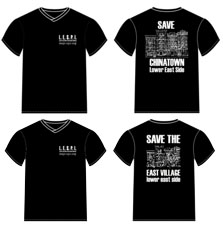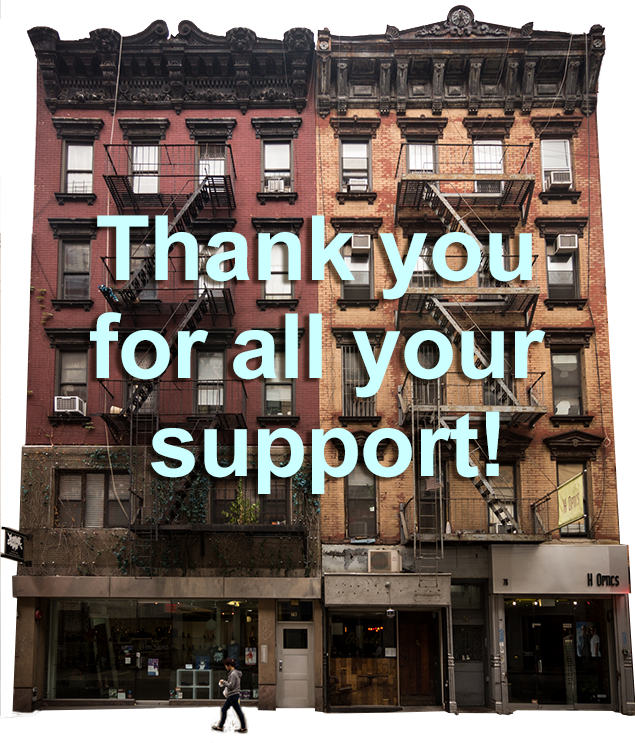|
|
|
|
Gov. Al Smith’s LES Neighborhood |
|
|
|
LESPI and the Friends of the Lower East Side recently surveyed a wonderful but not widely known Lower East Side enclave: the blocks around Al Smith’s home at 25 Oliver Street, including St. James Place, James Street, and Madison Street. Al Smith (1873-1944), one of New York’s most popular governors, lived in this area for some 50 years, initially at a home on South Street where he watched the Brooklyn Bridge rise. His church and school - the landmarked St. James Roman Catholic Church on James Street and its nearby grammar school on St. James Place, built in 1837 and 1868 respectively - are both still standing. The streets around Oliver Street encompass many buildings from the 19th and early 20th centuries, some enlarged and altered, but most intact and constituting an environment that Smith would easily recognize today. He lived with his young family in an apartment at 28 Oliver Street (located in what is now P.S. 1 Alfred E. Smith Elementary School playground), before moving across the street to No. 25 - still very much intact - in 1909 for larger quarters. He was still living there in 1919 when he was elected Governor of New York for the first of four terms. Well-known across the country as “The Happy Warrior,” Smith also earned a second nickname, one that acknowledged his old neighborhood—he was proudly recognized as, “The King of Oliver Street." |
|
|
|
|
|
|
|
The City continues to move forward with its plan to bulldoze John V. Lindsay East River Park, create an 8-12 foot high berm to provide protection against storm surge and sea level rise, and build an elevated new park on top. This, plan, part of the East Side Coastal Resiliency Project, will impact historic architectural resources in and around East River Park. LESPI is a consulting party to the Project’s Section 106 Review Process, which assesses the historic preservation impacts of the plan. As part of this process, LESPI advocated for the preservation of the Marine Engine No. 66 Fireboat House that currently serves as the home of the Lower East Side Ecology Center. Happily, preservation of the Fireboat House, which is eligible for the State and National Registers of Historic Places, is now included in the City's plans. As strategies are developed to flood-proof the building, LESPI will have the opportunity to review and comment on which options are most historically and architecturally appropriate. LESPI also advocated for the preservation of the Park’s two Art Deco-style Comfort Stations. These WPA-era structures had been passed over by both the City for landmarking and by the State Historic Preservation Office (SHPO) as part of their overall eligibility determination for State and National Register listing for the entire Park. Following LESPI's inquiry with the SHPO, the State has agreed to re-review the buildings’ eligibility based on their individual merits. We’re currently compiling information on these structures to assist the SHPO. We’ll let you know the outcome. |
|
|
|
Yiddish Theater Walk of Fame |
|
|
|
|
|
LESPI Board members Barry Feldman, Laura Sewell, and Deborah Wye are participating in a community working group to determine the fate of the deteriorating Yiddish Theater Walk of Fame on 2nd Avenue at East 10th Street. The Walk of Fame, similar to that on Hollywood Boulevard, honors the stars of the “Yiddish Rialto” theater district. Centered on Second Avenue below East 14th Street during the decades around the turn-of-the-20th-century, the “Yiddish Rialto” at its peak enjoyed a larger audience than the Broadway theaters uptown. A few of the Yiddish language theater buildings still remain, including the landmarked Louis N. Jaffe Theater on Second Avenue and East 12th Street. The Yiddish Theater Walk of Fame is presently in front of a Chase bank branch, but it originally marked the entry to the celebrated 2nd Avenue Deli. It was the Deli’s owner, the late Abe Lebewohl, who conceived and created this display in the 1980s. Ms. Wye has completed a condition survey of the 32 granite sidewalk blocks that celebrate sixty distinguished figures of the Yiddish Theater. The working group, organized by the Manhattan Borough President’s Office, is in the process of determining the best way forward to preserve these original blocks, which may include installing replicas of them at another location on 2nd Avenue. |
|
|
|
|
|
|
|
|
|
|
|
"The Decorated Tenement" Book Event |
|
|
|
|
|
On November 6, author Zachary J. Violette’s gave a wonderful illustrated lecture based on his recently published book, “The Decorated Tenement: How Immigrant Builders and Architects Transformed the Slum in the Gilded Age.” His talk provided a wealth of information, much of it newly revealed, on the politics, culture, architecture, and sociology of a building type that has been much maligned and little understood. The event, sponsored by LESPI and Kehila Kedosha Janina, was held at Kehila Kedosha Janina synagogue on Broome Street, a NYC landmark with a historically intact sanctuary that has served NY's Greek Jewish community since the 1920s. After the lecture, attendees enjoyed a book signing and wine and cheese reception. A wonderful, fascinating evening! |
|
|
|
|
|
|
|
Almost everyone in the East Village / Lower East Side is concerned with the amount of insensitive development in the area, including the resulting loss of long-time residents and small businesses, and the destruction of historic buildings. With the City’s plan for a tech hub on East 14th Street, these trends are likely to accelerate. To counter this overdevelopment, local preservation and community groups, including LESPI and Village Preservation, have been asking the City to provide comprehensive zoning and landmarking protections for the area. Instead of providing a comprehensive plan, however, the City has now offered a proposed new regulation to require special permits for hotel construction only. Although special permitting would slow the creation of new hotels, it would not slow the creation of new, out-of-scale and insensitive commercial development. Following testimony by LESPI and other groups, Community Board 3 recently voted to pass a resolution against this special permitting proposal. For LESPI’s testimony see our letter to CB3 at our website HERE. We’ll keep you posted. |
|
|
|
|
|
|
|
LESPI’S EXPANDED MISSION: THE DESIGNATION OF INDIVIDUAL LANDMARKS! |
|
Until very recently, LESPI focussed primarily on the creation of landmarked historic districts in the traditional Lower East Side: the East Village, LES below Houston Street, Chinatown, Little Italy and the Bowery. A few years ago we were instrumental in the creation of the East Village / Lower East Side and East 10th Street Historic Districts; we're currently working to have a Lower East Side Tenement Historic District designated in the area around the Tenement Museum, as well protections put in place for Chinatown's historic core. Now, as part of our mission, we'll also be pursuing NYC Individual Landmark designation for the area’s architecturally and historically important individual buildings. Our first push is for landmarking the Renaissance Revival style Eastern Dispensary building on Essex Street. If you’d like to get involved, please let us know! |
|
|
|
|
|
|
|
GIVING TUESDAY IS DECEMBER 3 - DONATE TO LESPI! |
|
|
|
|
|
|
|
Giving through AmazonSmile We love small local businesses. But if you happen to shop at Amazon, you can choose AmazonSmile, which will donate a percentage of each sale to the charity of your choice - we hope you'll pick Lower East Side Preservation Initiave (LESPI)! |
|
|
|
|
|
|
|
Sign LESPI's Petition for a LES Historic District! |
|
Join more than 2,500 people who have signed LESPI's petition for a new Lower East Side historic district below Delancey Street, in the blocks around the Tenement Museum. This is one of the city's and country's most important communities, due to its unique immigration, artistic, cultural and architectural history, and the formidable role it has played in our city's and nation's development. The only way to protect the historic Lower East Side from complete demolition and redevelopment is city landmarking. Sign the petition HERE! |
|
|
|
Support LESPI and look good doing it with a LESPI t-shirt! Proceeds benefit LESPI's work. Only $25 (including shipping and handling). Send a check made out to "LESPI/FCNY", and send to LESPI, 93 Third Avenue, #1223, New York, NY 10003 and indicate which shirt and size (call 347-827-1846 with questions). Unfortunately we cannot offer returns or exchanges. |
|
 |
 |
|
|
|
Great Holiday Gift Ideas! |
|
|
|
|
|
|
|
LESPI's books "East Village: Lens on the Lower East Side" and "Chinatown: Lens on the Lower East Side" are each fascinating histories of their respective historic communities, accompanied by the work of six boldly contemporary professional photographers who capture the areas' special streetscapes, people and spirit. All contributors have ties to the local community. The East Village book is available at McNally Jackson on Prince Street and The Source on East 9th Street; the Chinatown book is available at Museum of Chinese in America on Centre Street, the Strand Bookstore on Broadway, Jackson McNally on Prince Street, and Pearl River Mart at Chelsea Market and Broadway in Tribeca. |
|
|
|
You're contribution will help us protect our historic LES buildings and streetscapes! |
|
|
|
|
|
|
|
Lower East Side Preservation Initiative
93 Third Avenue #1223 | New York, New York 10003
347-827-1846 | info@LESPI-nyc.org |
|
|
|
|
|
|
|
|
|
|
|